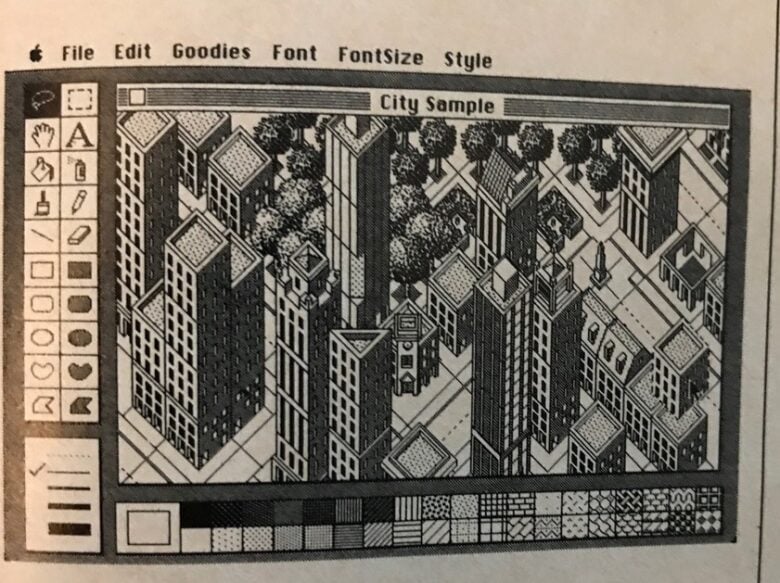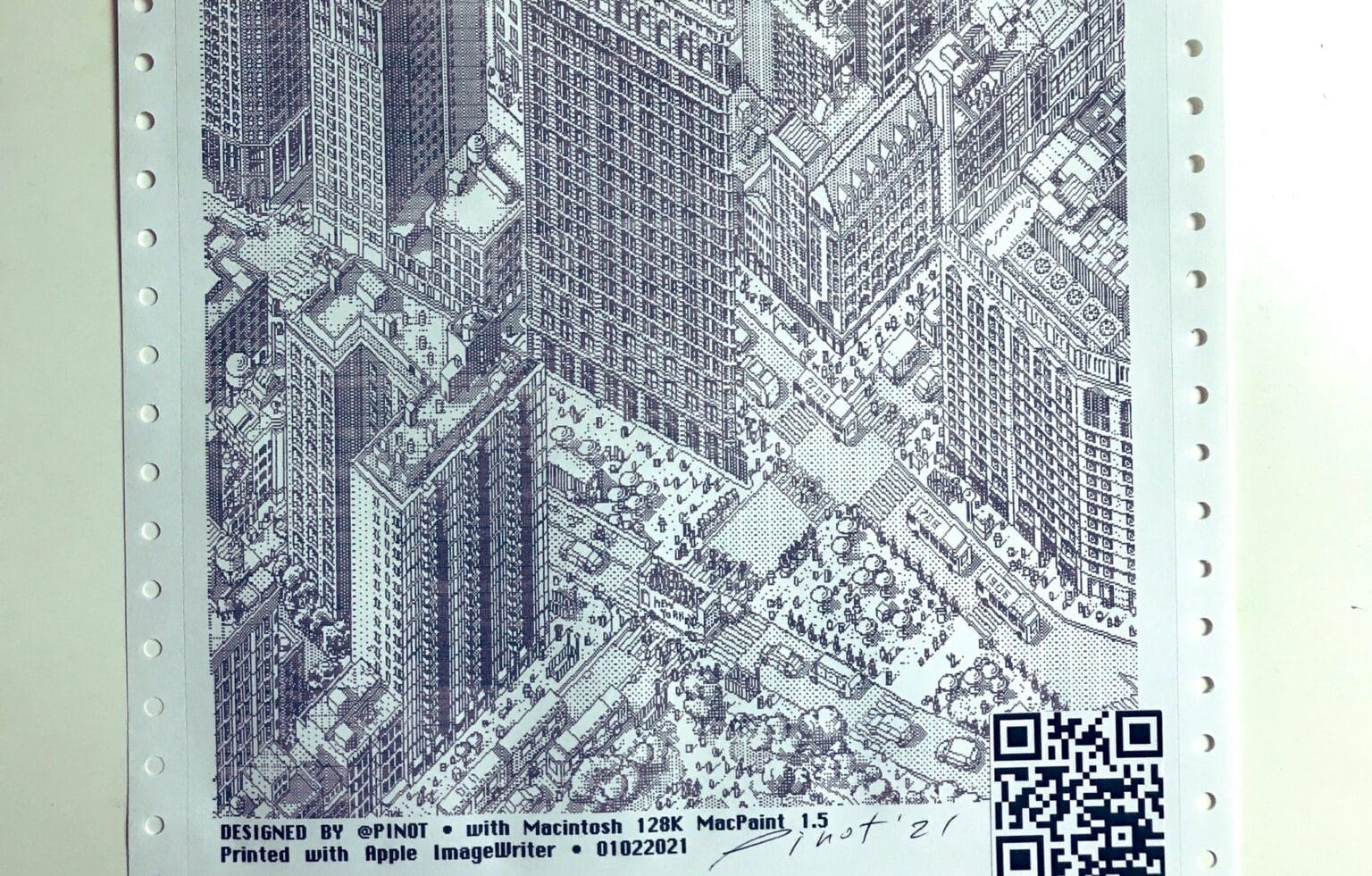Using a 1984-era Macintosh 128K and various retro tools, Pinot W. Ichwandardi painstakingly crafted a beautiful pixel art drawing of one of New York City’s most stunning skyscrapers.
Ichwandardi created his stunning image of the Flatiron Building one pixel at a time, a process he calls “pixel knitting” due to its time-intensive nature. But the incredibly detailed artwork isn’t even the point.
“The most rewarding thing from it is the process,” the 50-year-old designer told Cult of Mac.
It just goes to show that even a Mac that’s nearly 40 years old can still be used to make amazing pieces artwork. And you can buy a print of Ichwandardi’s Flatiron Building art — printed on a vintage dot-matrix printer, naturally!
Making pixel art on a vintage Mac

Photo: Wahyu Ichwandardi
While creating art on a computer now seems standard, it was certainly a new idea when the Mac burst onto the scene in 1984. As a kid growing up in Indonesia, it was absolutely a new concept for Ichwandardi, who was immediately excited by the possibilities.
“[At the time], my parents could only afford a IBM PC clone computer,” said Ichwandardi, whose day job is working as a content creator at digital agency VaynerMedia NYC. “It was basically only DOS with an on-screen prompt. Then, in 1986, my cousin’s family came [to visit and] brought with them a Macintosh 128K. It was magical. I couldn’t stop playing with it, drawing with it, making simple animations, and printing my art. They were only with us for a couple of days. But I became obsessed with Macintosh.”
Re-creating the Flatiron Building, one pixel at a time
Ichwandardi’s Flatiron Building image, he says, took months to complete. He works with a mouse, as well as a 1988 GTCO graphics pad called a MacIntizer and a 1989 Calcomp graphics tablet called a Wiz.
Ichwandardi insists on using old gear, much the same way as cartoonist Ed Piskor (Hip Hop Family Tree) uses vintage tools like Zip-A-Tone sheets and Leroy Lettering sets to give his books an authentic feel.
It’s all about embracing genuine tools — not just replicating vintage effects using some fancy Photoshop plugin.
“I’m not sure if ‘native process’ is a common term, but basically I only do pixel art using native technology or retro technology from the early days of computer art in the 1970s and ’80s,” Ichwandardi said. “It’s not just for the purpose of nostalgia, but about experiencing the retro process. This isn’t just for me, but also for my children, so that they understand the history of technology, and how to create something from it.”
Fourth copy is printing. So far so good pic.twitter.com/iuREaUlTcX
— Pinot W. Ichwandardi (@pinot) February 9, 2021
More interesting Mac art from Pinot W. Ichwandardi
This isn’t the first piece of Apple art by Ichwandardi. In 2017, he created an animated trailer for The Last Jedi using an Apple IIc computer that landed around the time of the original Mac.
Cita-cita waktu masih kecil di th 80an: bikin trailer Star Wars pakai komputer Apple bermonitor monochrome, baru kesampaian sekarang. pic.twitter.com/kUV28VB5pq
— Pinot (@pinotski) June 26, 2017
Then, a couple of years ago, Ichwandardi re-created rapper Childish Gambino’s This Is America music video on his 128K Mac. As with his pixel art cityscape, Ichwandardi used MacPaint for the drawing. He then took things (marginally) more modern, using a 1987 Macintosh SE with MacroMind VideoWorks for the animation. He connected them using LocalTalk, an early bit of Apple networking technology.
The effect proved so good that Twenty One Pilots approached Ichwandardi to lend his expertise to a lyric video for one of the band’s songs.
“Because they’re my kids’ idols, we instantly said yes when they reached out,” Ichwandardi said.
View this post on Instagram
Vintage Mac ad fires up Flatiron Building pixel art
The idea for Ichwandardi’s Flatiron Building project came from an ad he first saw in an old Macintosh Buyer’s Guide, a catalog his dad obtained for him in the 1980s. The ad, depicting a bitmap image of a building, was for daVinci Building Blocks, software made by long-defunct Hayden Software. It gave users who worked in architecture and design a way to produce isometric renderings of buildings using hundreds of virtual blocks.
Ichwandardi found himself taken by the image at the time. Some three decades later, he finally created a piece of work inspired by it.
“It’s a passion,” he said. “What I’m doing with the old Macintosh today is like finishing my unfinished childhood project or dream.”

Photo: Macintosh Buyer’s Guide


